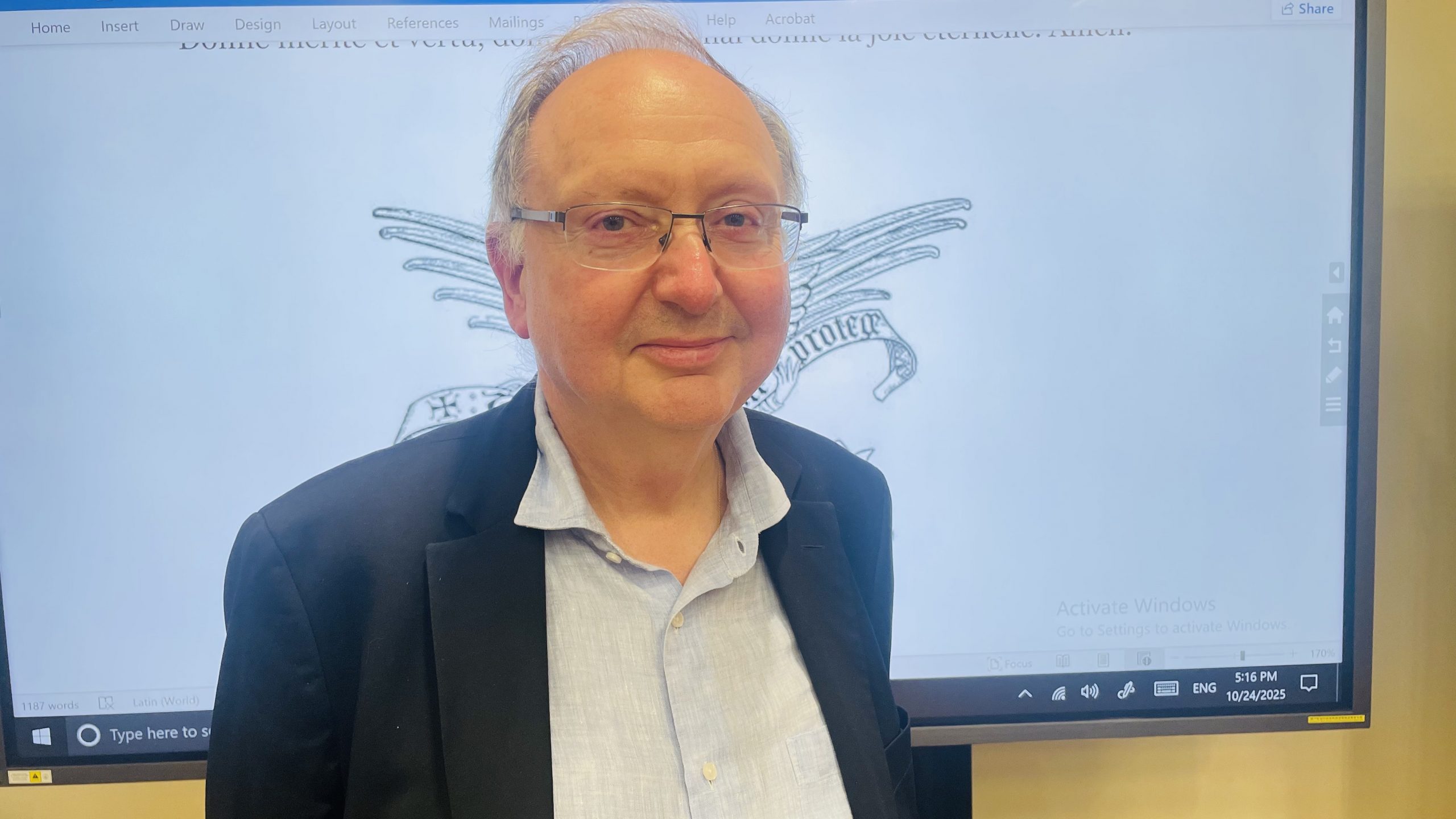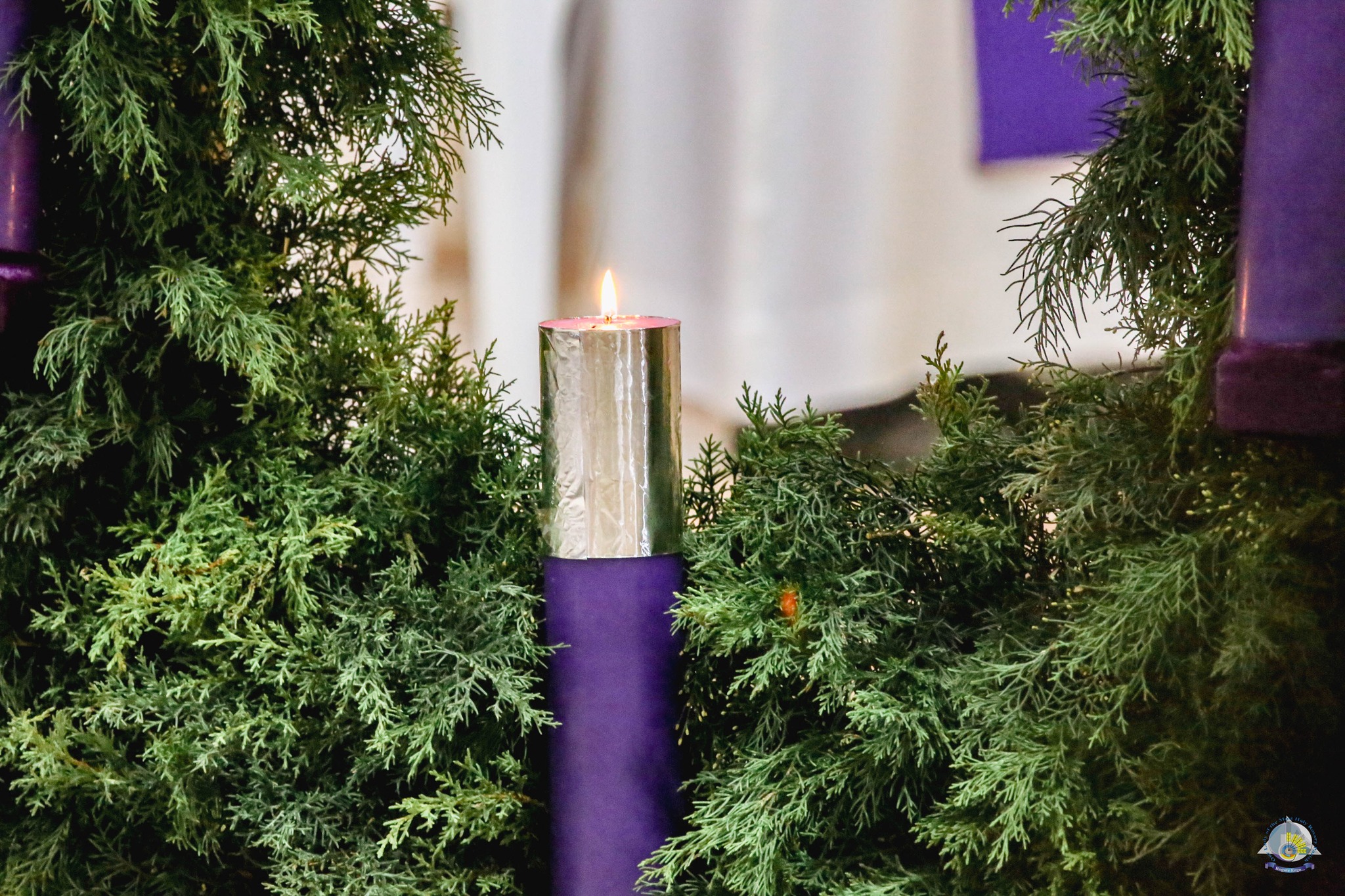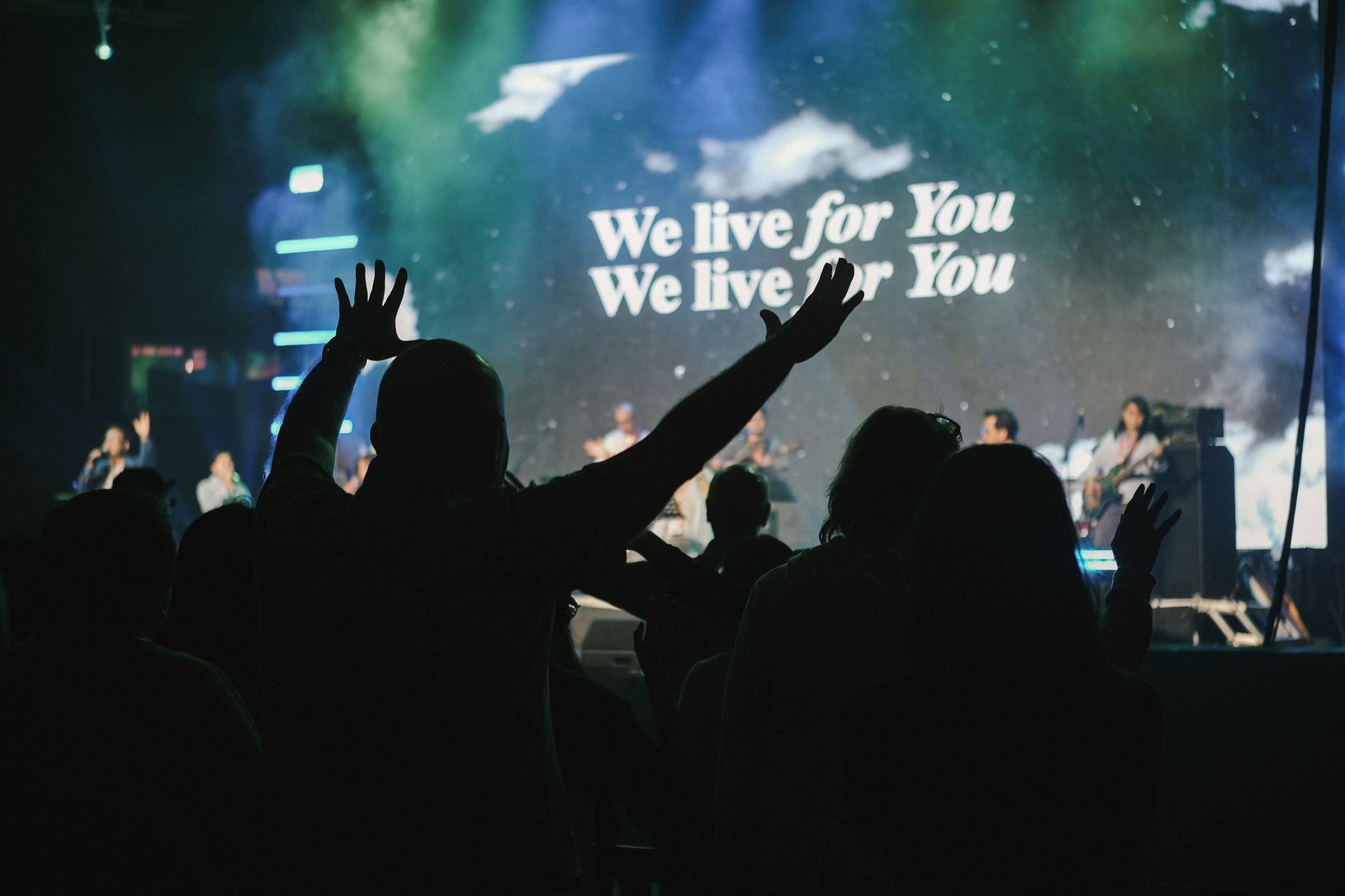Marco Carvalho
It´s one of the world’s most renowned choral ensembles and it performed in Macau late last month. The Choeur Grégorien de Paris performed, who performed in the 100th Anniversary Concert of the University of Fu-Hen, has included the territory on its Asian Tour. The group sang at Saint Lawrence’s Church and at the Saint Joseph’s Seminary and Church. Author of several books about Gregorian chant, Pierre Loiret is also one of the oldest members of the Parisian ensemble. A former member of the French Navy with a PhD in Economy and Finance, Mr. Loiret told “O Clarim” that Gregorian Chant is not a thing of the past: in Europe there’s a revival being fueled by the younger generations.
We tend to look at Gregorian Chant as something that accompanies Mass and accompanies liturgy, but it’s something more, isn’t it? In a certain sense, it’s a different form of prayer. Is Gregorian Chant something of the past? Or, as we have seen here, it’s something that is very much still alive?
Pierre Loiret: It is still alive, first and foremost because it’s a prayer. It’s a prayer like the “Pater Noster” and all the prayers that we endorse to the Virgin Mary. It’s a prayer from the old times, but it’s nonetheless a prayer and one prayer that is still relevant today. It is still useful for those willing to keep a conversation with God. It’s a way of appropriating the tradition and the tradition is still something that helps us today. We are continuously building our experience based in the past and we sincerely believe these old foundations may still help the Church.
All comes back to Gregorian Chant and starts with Gregorian chant. How did Gregorian chant inaugurate a different way of being in the Church? How is Gregorian Chant different from sacred music, in a general sense?
P.L: Exactly. Gregorian chant was the beginning of a long musical tradition. In Eastern Europe, there were different traditions in Greek language, for instance the Orthodox chant, within the Orthodox Church. The Orthodox chant set the basis for sacred music. They were, in a certain sense, pioneers. In the other hand, aspects such as the notation or the partition were invented to memorize Gregorian chant. Subsequently, musical notation was used for other styles of music: it was used with polyphony and so on. In fact, Gregorian chant is at the root of western music. That’s why it is so important. In the liturgy, we can mix Gregorian chant with other styles of music, but only Gregorian chant takes us back to the origins. Gregorian chant is at the origin of sacred music.
Why did it disappear from the churches? Why don’t we see Gregorian Chant being used as a part of liturgy anymore?
P.L: There were two different processes at play. The first one was the adjustment or alteration of the very own nature of the chant as time went by. The tradition has been lost, and it was only restored in the 19th century, by the monks of Solesmes. The monks of the French Abbey of Solesmes collected hundreds of manuscripts and tried to understand how the Gregorian chant was composed. The second phenomena was a result of the Second Vatican Council. The Second Vatican Council installed the Mass in different languages, so that people could pray in their own language. Latin is a very important language but is not a language used by France, Germany, Italy or any other significant country. So, as time went by, the habit of using Gregorian chant during the liturgy slowly faded. Now, it’s being restored. And it’s being restored because we understood that Gregorian chant is a factor of unity between nations, not only in Europe, but also all around the world.
Were you, somehow, surprised by the invitation to sing in places like Macau, Taiwan or Hong Kong? Apart from Macau, you have also been in Hong Kong and Taiwan. When we talk about places such as Taiwan, we don’t think primarily of them as catholic regions…
Pierre Loiret: Yes, it was a delicious surprise. In fact, we were invited by one of our old members. Lionel Hong studied Gregorian Chant with us in Paris, and he invited us to be part of the celebrations of the centenary of the Catholic University of Fu-jen, in Taipei. We were very honored by the invitation. What we discovered, nevertheless, is even more enticing. We found out that there were people in Taiwan who were very interested in Gregorian chant. Here, in Macau, the same thing happened. We got the impression that there is still a kind of tradition remaining from the past here in Macau. We appreciated quite much the invitation to come here.
How did the experience of being part of the centenary of Fu-Jen University, which is the oldest Catholic university in China go? Was it a rewarding experience?
P.L: Yes, it was very good in fact. We were very well received. The people were very interesting. We organized a concert-conference, like we did in Macau. We did a Vespers concert, with people chanting along. We performed in masses and other religious services. It was very, very interesting. There was a very big meeting with all the people from the University. A very interesting university, by the way. Very powerful, I should say. Personally, I was very impressed by Taipei, but I am also very impressed by Macau.
You were talking, a few moments ago, about the revival we are witnessing, in bringing back Gregorian chant. Are there many people going back to the roots of sacred music?
Pierre Loiret: Yes, there is a revival of Gregorian chant in Europe. It’s very recent, but it is something that is fueled by young people. Young people are looking for more spirituality in the chant used during the Masses. They are going back to Gregorian chant. The problem is that they have lost the sense of tradition. We have to reinstate the tradition and that requires a huge amount of work.
The Choir was founded more than fifty years ago…
P.L: Fifty years ago, yes.
When the Choir was founded, Europe and France were living in a different era. The Choeur Gregorien de Paris is, nowadays, one of the most well-known choirs in in the entired world. You are one of the oldest members of the group. Were you expecting this kind of projection when the choir was founded?
P.L: To be honest, the first few years were very difficult for us. Those times were difficult because nobody wanted to sing Gregorian Chant during the Masses. Nobody. We were looking for someone that could chant and would be willing to join us. We found a few people, but it was difficult. Slowly, things improved and we decided to go abroad. We decided to look for members not only in France, but also in some other countries. We invited musicians from abroad to conduct the choir in France and then, to found Gregorian Choirs abroad, in places such as the Czech Republic, Estonia, Lithuania, Norway or even in South Korea. We hope to establish this sort of contacts in Macau, in Taipei and even in Mainland China. In the Philippines, we have a few solid contacts. We have been in the Philippines before. One year ago, we went to the United States and toured the United Sates: we went to Washington, Baltimore, Annapolis, New York. It was quite interesting to meet the Catholics there.
Do you need to believe in God to be part of the Choir? Who are the members of the choir? Priests and seminarians? People from all walks of life?
Pierre Loiret: In the beginning, not all the members were religious. A few of them were not even Catholic. There were a few Anglicans, for instance. It was not an obligation, at all, because Gregorian chant is a way to approach God, but it was not a duty to be religious or even to be religious. Nevertheless, it’s better to believe in God, of course. To understand what we are singing is better to have faith. Gregorian chant is, first and foremost, dedicated to celebrate God.
How many members does the group currently have?
Pierre Loiret: We brought 20 people to Macau, but in Paris we are a little bit more. Some of the members couldn’t join us for professional reasons. The group is constituted by 15 women and 20 to 25 men.


 Follow
Follow


